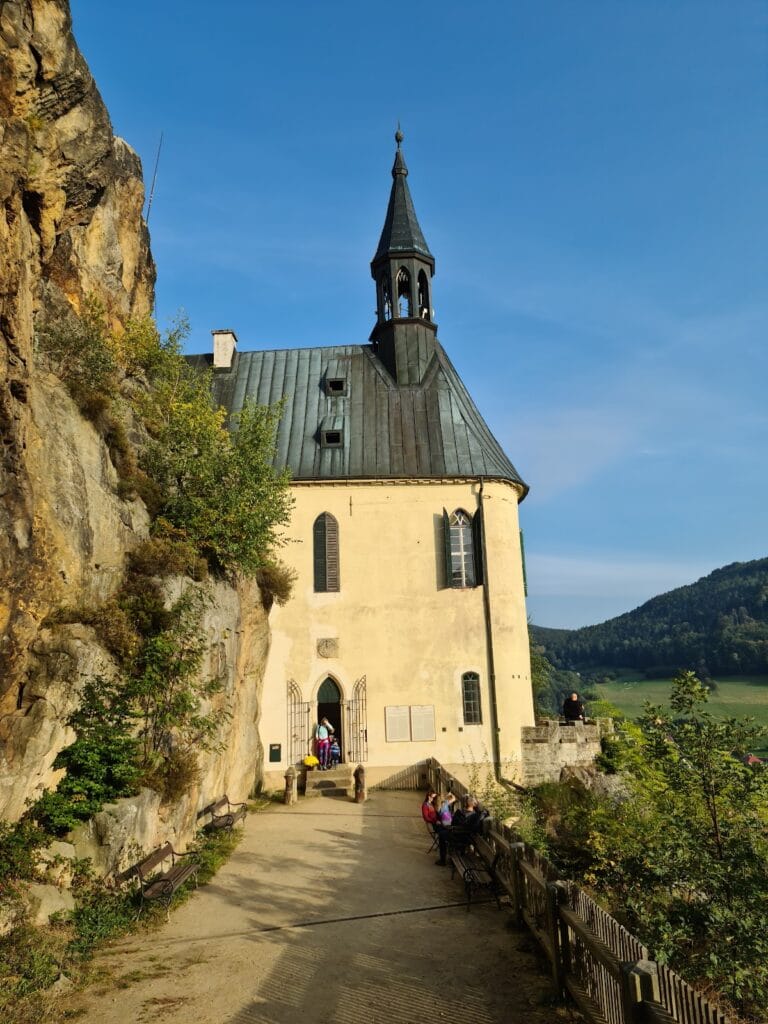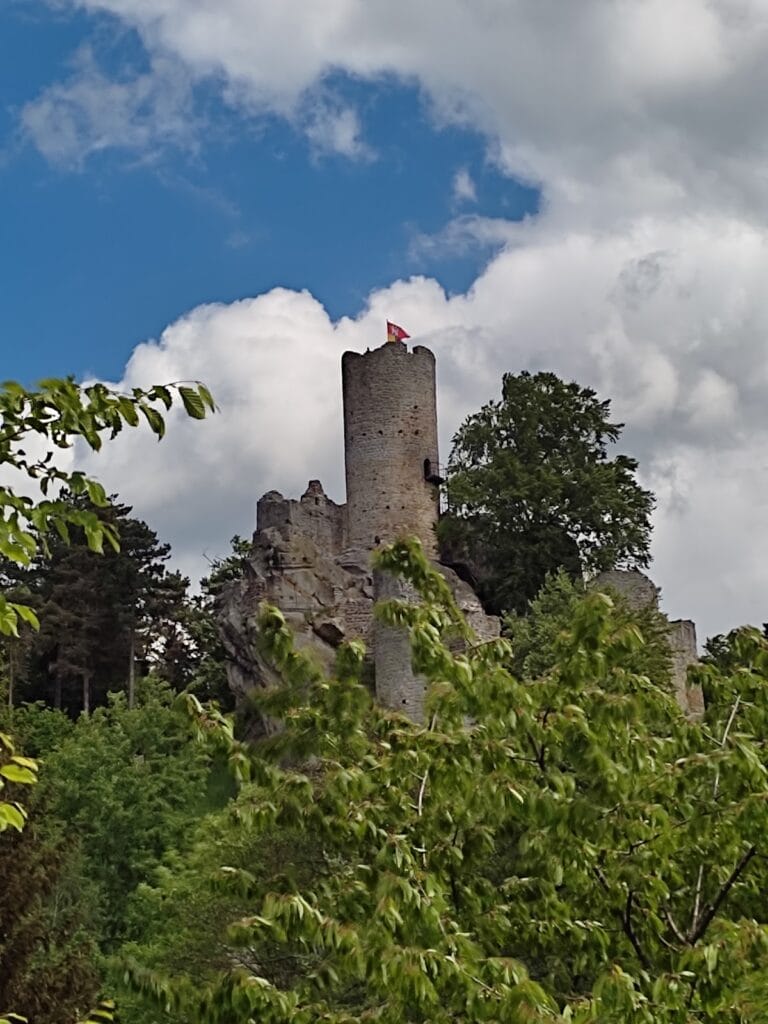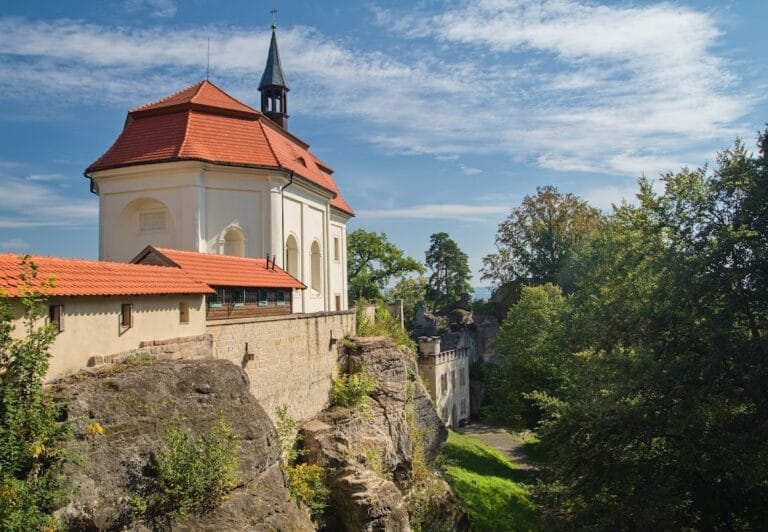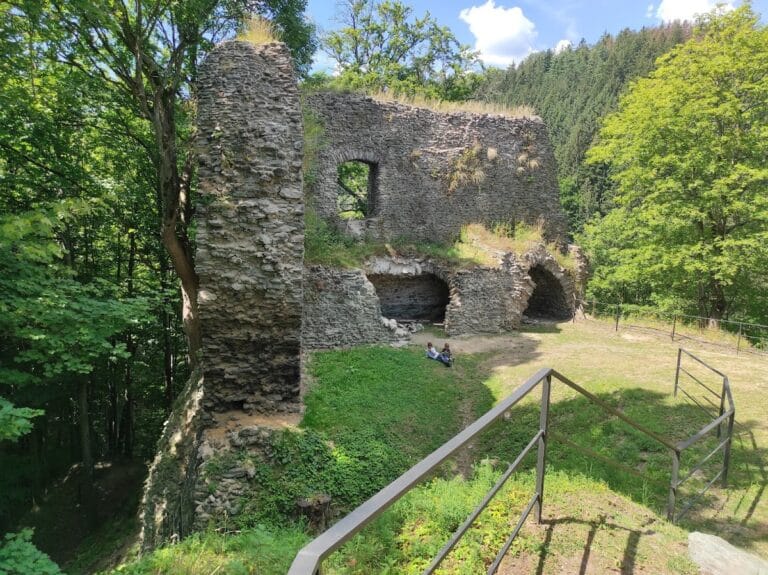Vranov Castle: A Historic Rock Fortress and Memorial in the Czech Republic
Visitor Information
Google Rating: 4.8
Popularity: Medium
Google Maps: View on Google Maps
Official Website: www.vranov-pantheon.cz
Country: Czechia
Civilization: Medieval European
Remains: Military
History
Vranov Castle is a rock fortress located near the village of Malá Skála in the Czech Republic. It was initially established in the early 15th century by members of the German Bohemian nobility, specifically the Valdštejn (Waldstein) family.
The stronghold was founded in 1414 by Henning von Waldstein as a military fortification designed to oppose the Hussite movement, which was active in the region during that period. Documentary records first mention Vranov Castle with certainty in the years 1422 and 1425. Throughout the 15th century, the castle remained under the control of the Waldstein family and served as a strategic Hussite base during the tenure of Heníček von Waldstein, who managed it between 1453 and 1487. This phase marks the peak of the castle’s operational use.
By the close of the 15th century, the fortress lost its military importance, with abandonment occurring around 1500. Subsequently, the castle gradually fell into ruin. Ownership changed hands in 1538 when Jan of Vartemberk acquired the estate, although records suggest he had little interest in restoring or maintaining the fortifications.
Centuries later, in the early 19th century, the site experienced a significant transformation under Franz Zacharias Römisch, a textile manufacturer and owner of the nearby Malá Skála estate. Between 1803 and 1826, Römisch converted the castle ruins into a romanticized memorial inspired by the Walhalla — a famous German pantheon dedicated to heroic figures. This adaptation created a Pantheon dedicated to military leaders and notable personalities from German, Habsburg, Russian, Prussian, and Czech history. Among the honored figures were prominent rulers allied during the Napoleonic Wars, such as Alexander I of Russia, Emperor Francis I of Austria, and King Frederick William III of Prussia, alongside generals like Schwarzenberg, Colloredo-Mansfeld, Platow, Ostermann, Blücher, and Kleist.
The memorial also includes many inscriptions carved directly into the surrounding sandstone cliffs. These texts comprise German-language aphorisms, philosophical sayings, and poetry, including the final stanza from Friedrich Schiller’s play “Das Mädchen von Orleans.” The central inscription declares the site a monument commemorating the international coalition and struggle for liberation during the period of 1813–1815, reflecting the historical importance of the Napoleonic conflicts.
In 1826, the romantic redesign culminated with the construction of a neo-Gothic hunting lodge on the castle courtyard. Designed to resemble a small chapel, this summerhouse became one of the most visible features of the site’s 19th-century phase, intertwining historical homage with picturesque architectural elements.
Remains
Vranov Castle is situated atop a steep sandstone cliff overlooking the Jizera River, its layout extending approximately 400 meters along the rock outcrop, making it the largest known rock castle in Bohemia. The fortress primarily consists of spaces carved directly into the sandstone, forming an intricate network of rooms, stairways, passages, and niches that together create a labyrinthine complex.
The castle well, hewn into the stone, persists among these features, demonstrating the practical aspects of life within the fortress. The many beam sockets carved into the rock indicate where wooden structures once stood, complementing the stone fortifications and providing support for floors or defensive elements.
Central to the site is the Pantheon chamber, a substantial rock-enclosed space that houses niches originally created to hold busts representing the allied monarchs and military leaders involved in the Napoleonic Wars. Though the sculptures are no longer present, the chamber’s form remains distinct, emphasizing the site’s later use as a memorial rather than a defensive structure.
On the castle courtyard sits the neo-Gothic hunting lodge erected in 1826 during the romantic period of reconstruction. This small building mimics a chapel in style and is built adjacent to a sheer rock face. It now serves as a place for rest and refreshment, highlighting its continued adaptation over time.
The highest point of the site is marked by a summit cross, which offers views toward the nearby Suché skály (known in German as Dürren Felsen) rock formations. This addition reflects the 19th-century interest in integrating natural and commemorative elements within the landscape.
Numerous German inscriptions remain well preserved across the rock surfaces throughout the former castle grounds. These include carved philosophical statements and phrases such as the aphorism “Zufrieden seyn ist große Gunst / Zufrieden scheinen großer Dunst / Zufrieden werden großes Glück / Zufrieden bleiben Meisterstück,” which reflects on contentment through poetic form. The principal memorial inscription designates the site as a tribute to the alliance and struggle of European nations for liberation from 1813 to 1815.
Archaeological studies confirm the predominant occupation and construction of Vranov Castle during the 15th century. While the presence of earlier fortifications on the rock cannot be definitively excluded, no conclusive evidence exists to substantiate their existence. The layers of carving, ruins, and inscriptions that remain today illustrate the castle’s transformation from a medieval military fortress into a romantic-era commemorative site.







